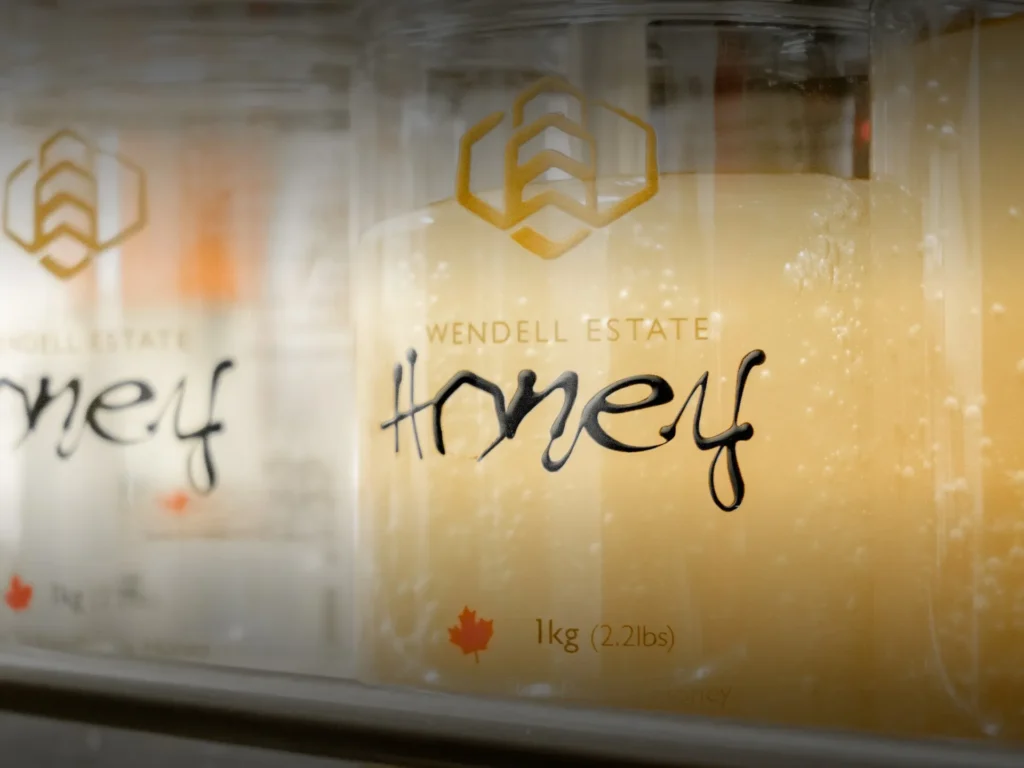
Why Raw Honey is More Expensive than Processed Honey
While there is much overlap in prices, on average, raw honey tends to cost more than processed honey. Since raw honey is simpler to produce, while processed honey requires heating and filtering, some might ask why the raw honey prices at the supermarket are generally higher than “regular” processed honey prices. In this post, I’ll touch on several reasons why raw honey costs more than processed honey, from ease of adulteration to honey quality and flavor.
Our award-winning raw honey isn’t cheap, but it is fresher and more raw than any honey that’s not still in a beehive. It’s a bit cheaper with 10% off your next order (up to $110 order value) with coupon code: GoodValue
Adulteration
Natural honey costs more to produce than most sugars. This tempts some unscrupulous honey companies to add cheaper sugar syrups to honey to fraudulently increase profits. The bee pollen that’s present in natural honey can be used to determine the floral source of the honey, and also to detect if the honey has been adulterated. The bee pollen is removed from processed honeys during the ultrafiltration process, making adulteration of processed honey more difficult to detect. The price per pound of raw honey depends on the higher production costs of honey, while adulteration of some processed honeys with cheaper sugar syrups drives the prices of processed honeys down. That processed “pure honey” on the store shelf may not be purely honey, regardless of what the label says. Or even what the manufacturer believes. Disturbingly, on some online market platforms, there are open advertisements for syrups of processed sugars that can pass all current laboratory tests for honey authenticity: the honey brand may even be unaware that it has purchased adulterated honey for use in its product.
Production Time
At ambient temperatures, honey is quite viscous. The high viscosity means that honey flows slowly at room temperature. As honey is heated, the viscosity decreases until it approaches that of water, flowing quickly through the packaging machines. The speed of packaging is increased with heated, pasteurized honey, which decreases the per-jar costs of packaging, and therefore the retail price of processed honey when compared to the increased costs of packaging slow-flowing raw honey. The trade-off of more efficient packaging is that heating the honey destroys some of the natural enzymes, polyphenols and flavanoids that give raw honey both it’s complex flavor profile and its myriad of health benefits.
(Right: at ambient room temperature, viscous honey fills both bulk drums and retail jars slowly. Time can be saved and production costs lowered by heating the honey so that it flows more quickly.)
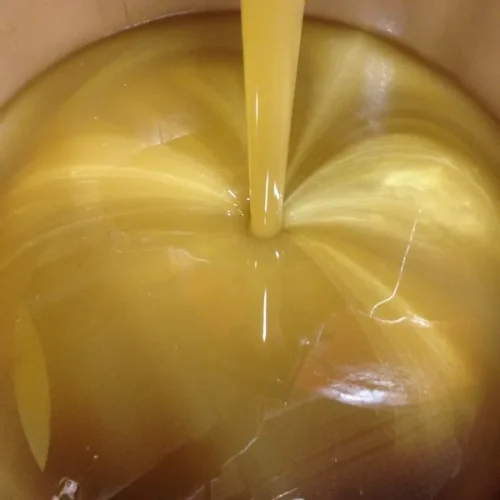
Production Time
At ambient temperatures, honey is quite viscous. The high viscosity means that honey flows slowly at room temperature. As honey is heated, the viscosity decreases until it approaches that of water, flowing quickly through the packaging machines. The speed of packaging is increased with heated, pasteurized honey, which decreases the per-jar costs of packaging, and therefore the retail price of processed honey when compared to the increased costs of packaging slow-flowing raw honey. The trade-off of more efficient packaging is that heating the honey destroys some of the natural enzymes, polyphenols and flavanoids that give raw honey both it’s complex flavor profile and its myriad of health benefits.

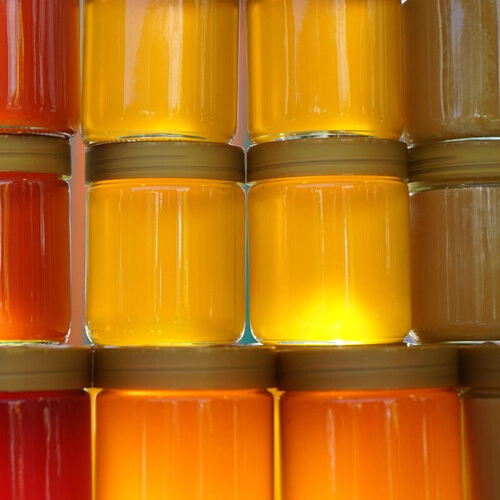
Color and Homogenization
As a commodity, the price per pound of lighter-colored honey is generally higher than that of darker honey (Two major exceptions being manuka honey and buckwheat honey). Producers of processed honey usually blend the cheaper darker honey with more expensive lighter honey resulting in the familiar, amber-colored honey products. Raw honey isn’t blended, so only the higher-quality honeys are sold as raw honey, which raises the cost of raw honey. Below I detail two specific ways in which homogenization decreases the price of processed honey by allowing the honey packager to use cheaper, inferior honey by blending it with better quality honey. Only the more expensive, better quality honeys can achieve success standing on their own as raw honey.
(Left: Honey comes in a wide range of different colors. Traditionally, lighter colored honey tend to fetch higher prices on the commodity market.)
Color and Homogenization
As a commodity, the price per pound of lighter-colored honey is generally higher than that of darker honey (Two major exceptions being manuka honey and buckwheat honey). Producers of processed honey usually blend the cheaper darker honey with more expensive lighter honey resulting in the familiar, amber-colored honey products. Raw honey isn’t blended, so only the higher-quality honeys are sold as raw honey, which raises the cost of raw honey. Below I detail two specific ways in which homogenization decreases the price of processed honey by allowing the honey packager to use cheaper, inferior honey by blending it with better quality honey. Only the more expensive, better quality honeys can achieve success standing on their own as raw honey.

Honey Quality Parameters
There are multiple measurable parameters of honey quality. As an example, water content, or moisture is one of the most important. A high moisture content indicates low quality, immature honey, which fetches lower prices on the bulk honey market. High-moisture honey ferments, while mature, lower-moisture content honey doesn’t. Because processed honey is blended, cheaper, high-moisture honey can be mixed with low-moisture honey, reducing overall costs. The pasteurization process kills the harmless, naturally occurring yeasts that can cause raw honey to ferment, so moisture content is less of an issue with pasteurized honey. Only mature, low-moisture honey can be sold as raw honey.
(Right: Excerpt of a battery of laboratory tests measuring honey quality parameters as well as antibiotics and other contaminants.)
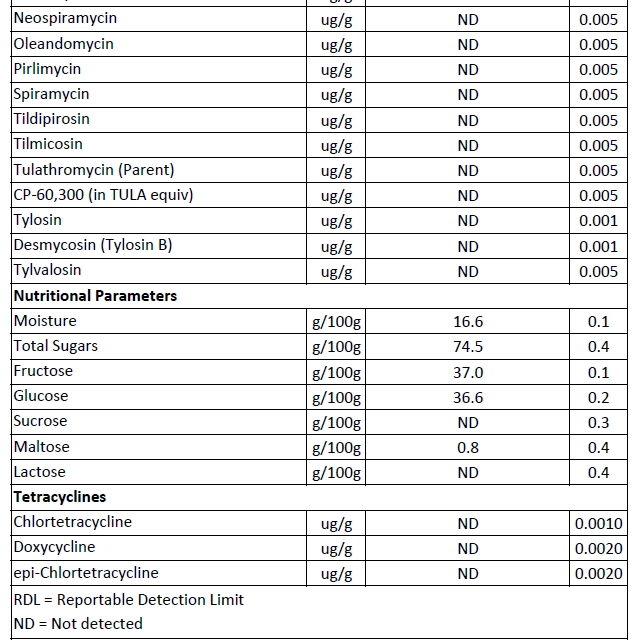
Honey Quality Parameters
There are multiple measurable parameters of honey quality. As an example, water content, or moisture is one of the most important. A high moisture content indicates low quality, immature honey, which fetches lower prices on the bulk honey market. High-moisture honey ferments, while mature, lower-moisture content honey doesn’t. Because processed honey is blended, cheaper, high-moisture honey can be mixed with low-moisture honey, reducing overall costs. The pasteurization process kills the harmless, naturally occurring yeasts that can cause raw honey to ferment, so moisture content is less of an issue with pasteurized honey. Only mature, low-moisture honey can be sold as raw honey.

Flavor
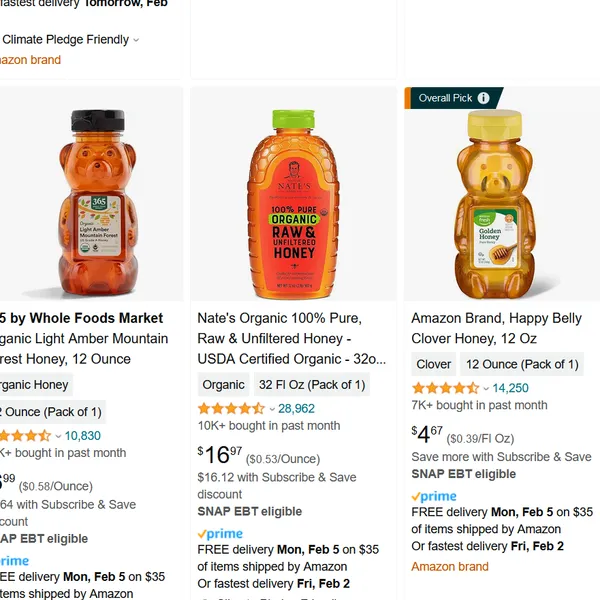
Raw honey displays all the complex flavors of its floral sources. Compare the flavors of orange blossom, buckwheat, clover and manuka honey and the different flavor profiles are obvious. Only honey with a more appealing flavor is normally sold as raw honey. The more appealing the flavor, the higher the cost of the honey. Less delicious honeys can be blended with better-tasting honeys in the production of processed honeys, which further lowers the cost of processed honeys. The heating of pasteurization further diminishes the complex flavor profile of the honey.
With the increasing research into health benefits gained by eating raw honey, increasing consumer awareness of the healthiness of raw honey, and increasing marketing of raw honey based on its health benefits, more people may be choosing raw honey purely for its health benefits rather than for its appealing flavor. Some dark-colored honeys, like manuka and buckwheat honey fetch higher prices lately due in part to their perceived health benefits. Though darker, stronger flavored honeys have always had their proponents: preferred flavor is a subjective, personal attribute. Nevertheless, flavor is objectively more prominent and diverse in raw honeys compared to generic blended, pasteurized processed honeys.

Final Word
I hope that this post has clarified why raw honey tends to cost more than processed honey. With the homogenization and degradation of processed honey, further quality deficiencies are less noticeable. With raw honey, the honey remains natural and naked: quality deficiencies are more noticeable so only the top quality raw honeys usually achieve success. When it comes to premium raw honey, I think you largely get what you pay for.
FAQ on Raw Honey Prices and Costs
The heating pasteurization destroys some of the natural bee enzymes present in raw honey, diminishing the health benefits of pasteurized honey compared with raw honey. You can see a summary of raw honey’s health benefits here. While raw honey may cost a bit more than processed honey, raw honey gives you more health benefits and more unique, complex flavor profiles.
That question is almost impossible to answer. I’ve seen raw honey priced as low as $9.36 for a 908g/2 lb jar. That’s $1.03/100g or $4.68/lb. Though whether this is actually raw honey, or even honey is questionable, as this company has been sued for fraudulent labeling and accused of adulterating the honey with sugar syrups. On the other end of the spectrum, I’ve seen raw honey that costs $127 for a 1 kg jar or $57.73/lb. Raw honey does tend to cost more than processed honey on average, but there is much overlap of the prices. The per-gram/per-ounce cost of both raw and processed honey depends on many factors such as:
- Quality (flavor, aroma, texture/mouthfeel) of the honey.
- Size of the jar: the smaller the jar, the higher the price per gram/ounce.
- Marketing: manuka honey is a great example of how marketing can dramatically drive prices up.
- Purity/adulteration of the honey.
- Country of origin: honey from Canada and the USA costs more than honey from countries like Brazil and India (popular sources of USDA organic honey).
If we’re talking about the cost per kilogram/pound, I’ll refer to our 1 kg (2.2 lb) jar of raw honey. This is our most economical jar meant for families and those who enjoy honey on a regular basis. If you purchase directly from us, a single jar costs $44/kg or $20/lb delivered to you. If you are able to purchase by the full case of 8 jars, because either you have enough cold storage room, you will share the case with friends or family, or you really eat a lot of honey, you benefit from cost savings. For a case of 8 jars, each jar of unfiltered raw honey costs $30.75 which is $30.75/kg or $14/lb delivered to you. Honey is heavy so shipping by post is expensive. If there’s a Wendell Estate Honey retailer near you, they may sell single jars at $30 or less. You can see our Canadian retail partners here and these stores sell Wendell Estate Honey in the USA.
The price of our pure raw honey is higher than many others on store shelves. There are good reasons for that. Every drop of our Canadian creamed pure white raw honey comes from our own beehives. We’re beekeepers first, and honey retailers second. This means that Wendell Estate Honey has three major advantages over most other larger brands of raw honey.
Wendell Estate Honey’s first advantage is that we use only our finest honey, unblended and unbatched, for our Wendell Estate Honey brand. This honey exceeds the honey commodity market’s top-price qualifications, so we thought it was a shame to sell it in bulk, even at the highest prices, only to have it blended with inferior honey to achieve a mid-quality (or even high-quality) honey product. As the reviews on google and on our website product pages testify, anybody that tries our honey will notice the uniquely smooth texture, fresh floral aromas and complex flavor profile that for many justify Wendell Estate Honey’s relatively high price.
Secondly, our pure raw honey is packaged fresh on the farm by us, directly after extracting the honey from the honeycomb, usually the day after it is harvested from the beehives. Wendell Estate Honey is never blended or batched, and never sees the inside of a bulk honey drum. Larger brands purchase their honey from beekeepers in bulk, blend and batch it, and then package it. While year-round industrial packaging results in lower honey prices on the store shelves, the honey may sit for months, or even years in the bulk drum before it’s packaged, losing health benefits and flavor.
The third way Wendell Estate Honey is superior to most brands of raw honey is our authenticity. A shocking amount of honey is adulterated. Adulteration often occurs when a honey packager adds cheaper unhealthy sugar syrups, or illegally imported, possibly contaminated, honey to decrease the retail honey price while unethically boosting profits. Beekeepers can also produce adulterated honey by feeding the bees sugar syrup and harvesting the resulting “honeyâ€. Wendell Estate Honey is produced and packaged by us on Wendell Honey Farm, so there are no 3rd party producers or packagers that could possibly introduce adulteration.
Another common fraudulent behavior is falsely labeling honey as “rawâ€. When larger brands purchase honey in bulk from beekeepers, the honey usually needs to be heated to get it from the bulk drum to the retail jar. The hotter the honey, the faster and cheaper the packaging process. There’s good evidence that at least one large brand of honey was fraudulently labeling honey as “raw†when the honey had been heated well past the commonly accepted raw honey temperature limit of 40 C / 104 F. Wendell Estate Honey is only packaged fresh as it’s extracted from the honeycomb.
We know exactly what’s in every jar of Wendell Estate Honey, and the beekeeping and packaging practices that produced it. Our GenuHoney certification is independent, 3rd party confirmation that our honey is exactly what we say it is.
Our award-winning raw honey isn’t cheap, but it may change the way you think of honey. It’s a bit cheaper with 10% off your next order (up to $110 order value) with coupon code: GoodValue
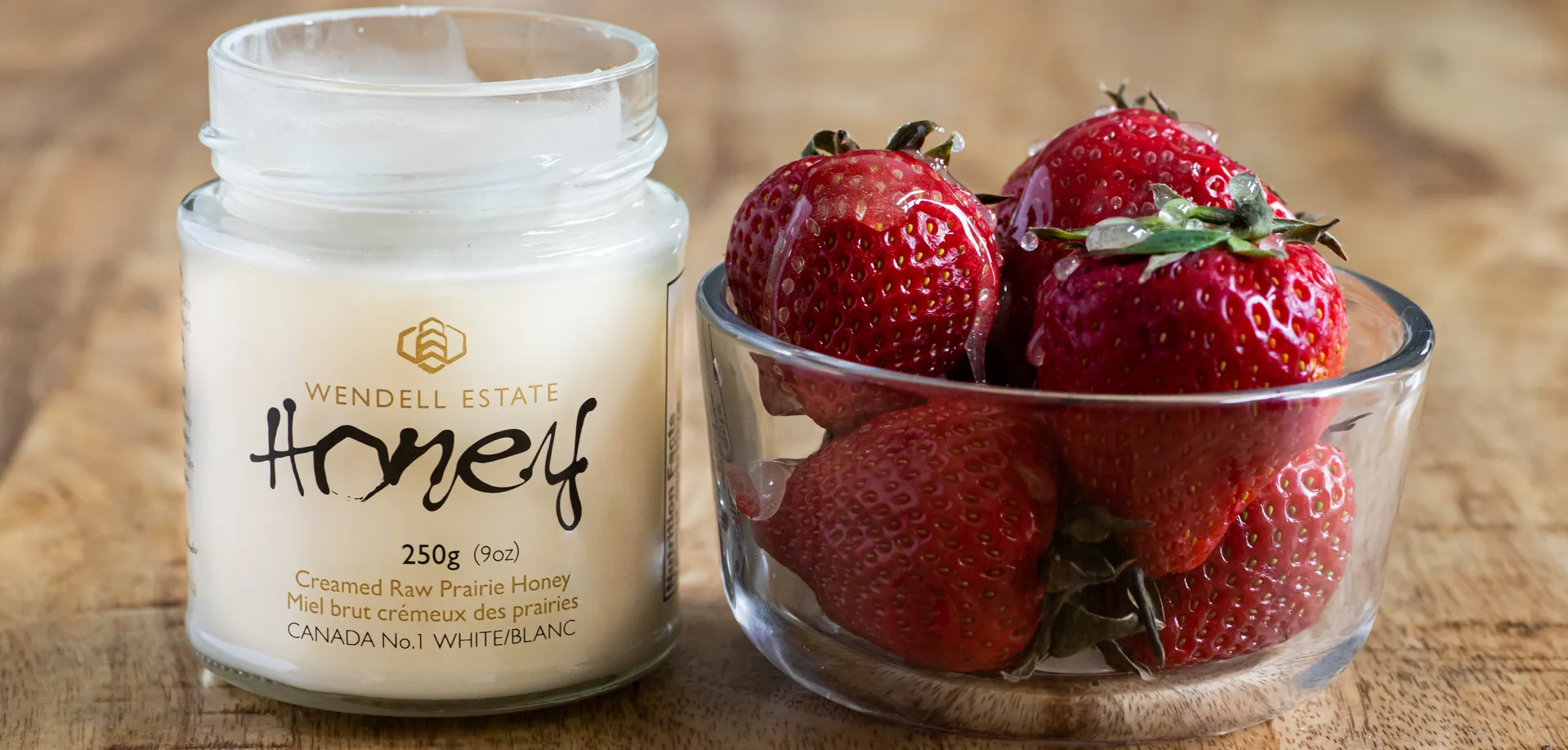
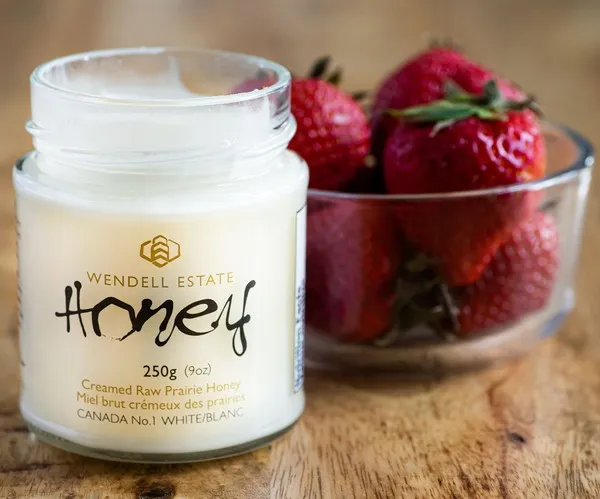
Jeremy Wendell
Share this story
